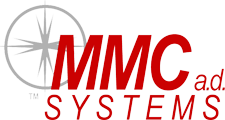Strategic Plans Part 4 – Tactical Plans

The final section of the Strategic Plan focuses on specific tactical plans and goals for the current year and in three (3) and five (5) years. It typically focuses on:
- revenue and expense targets and other key metrics
- specific strategic goals
- key capabilities needed to achieve the goals
- major activity priorities to help minimize conflict
This is a high level plan that frames and guides any/all detailed tactical implementation plans. The appropriate detailed plans should be created from the high level strategic plan. Management and monitoring of the organization should use these detailed plans.
Key Metrics
Key metrics are specific numerical and measurable numbers that an organizations wants to achieve over the different time frames. They represent a means to measure an organization’s success. There are the basic financial metrics like total sales, total expenses, profit, head count, … Other examples for a for-profit organization could include:
- Revenue growth: Track the percentage increase in revenue over a period of time.
- Customer acquisition: Track the growth of new customers. In addition, understanding and tracking new customer acquisition costs can be important.
- Customer retention: It is important to keep existing customers satisfied and loyal, which typically costs less that acquiring new ones.
- Employee satisfaction: Without a productive and engaged workforce it is not possible for an organization to achieve all of its other goals.
- Operational efficiency: This metric is related to cost management. A more efficient operation translates into a less expensive operation. The operational efficiency ratio is the ratio of output to input.
- Brand awareness: Increasing visibility and organization recognition indirectly translates into increased market share and directly into decreased costs to sell.
A non-profit’s financial metrics are similar but different. Instead of gross sales and sales expense, there are fund raising categories like donations, corporate and government grants, special programs and events, etc. A non-profit’s customer is typically referred to as the client. The clients are the people and organizations that the non-profit provides services to. As with a for-profit company, there are client acquisition and service costs. A non-profit’s strategic plan could include any of these and other metrics. Non-profit’s staff is a combination of paid and volunteer. Small NGO’s (non-government organization’s) staff is almost exclusively made up of full and part time volunteers. From a donor perspective metrics like dollars per client and the ratio of paid staff to volunteers can be important.
Quarterly Metrics
For the current year, the target metrics should be divided by quarter. As each quarter is completed, list the actual measured metric with the forecasted number(s). Highlight any major variations. If there are significant variations between forecasted and actual metrics, operational adjustments by the management team may be required.
Key Strategic Goals
The key strategic goals are a summary of the goals identified in the previous Part 3 Goals, but divided over 1, 3 and 5 years. These goals should be listed in priority order.
Key Needed Capabilities
Key capabilities are the unique skills, strength and resources that an organization has or needs to enable it to achieve its strategic goals and objectives. An organization’s capabilities will vary depending on their industry, organization size and target strategic objectives. Some examples include:
- Innovation: The ability to develop new and creative solutions, products, and services that meet the changing needs of its current and future customers.
- Operational efficiency: The ability to streamline processes, reduce costs and increase productivity to deliver high-quality products and services at competitive prices (cost for a non-profit).
- Customer service: The ability to provide exceptional customer/client experiences and build strong relationships with customers through personalized support, quick response times, and tailored solutions.
- Marketing and branding: The ability to create a strong brand identity, engage with target audiences, and promote products and services through effective marketing and advertising campaigns.
- Human capital: The ability to attract, retain, and develop top talent, build a diverse and inclusive workplace culture and provide employees with the resources and support they need to succeed.
- Financial management: The ability to manage financial resources effectively, optimize investments, and achieve sustainable growth and profitability.
- Technology and data analytics: The ability to leverage technology and data analytics to drive innovation, enhance operations and gain insights into customer/client behavior and market trends.
- Partnerships and alliances: The ability to form strategic partnerships and alliances with other organizations to expand capabilities, access new markets and create new value for customers/clients.
A list of current and need capabilities that are required to achieve the identified goals should be created for the current and 3 and 5 years.
Share this: